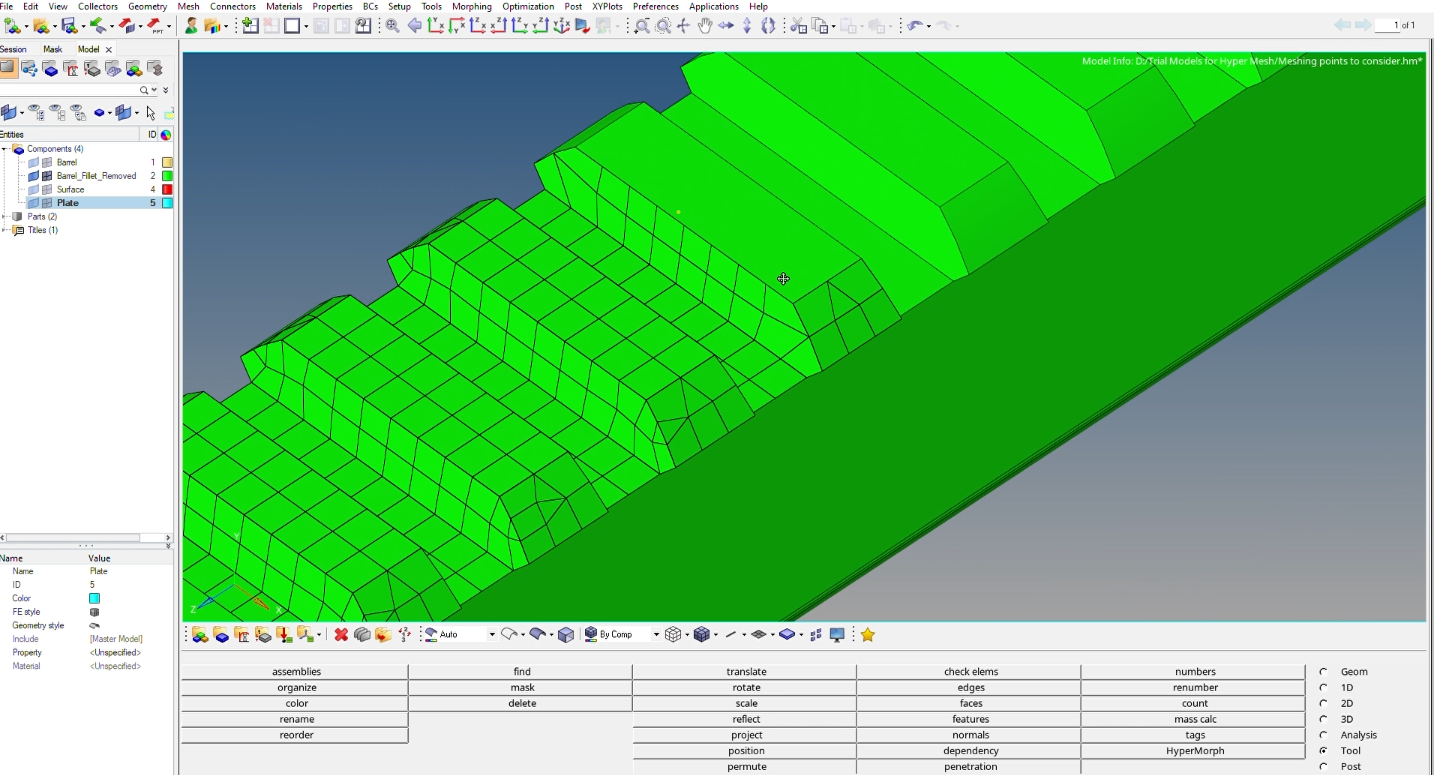Have you ever encountered errors thrown at you while meshing or solving a model and got irritated while troubleshooting? In this post, we are going to discuss some of the most common errors encountered during meshing and while running the solver.
1. The mesh is not enclosed
Cause – This error appears when you are trying to create a 3D Tetra mesh and either the 2D meshed geometry is not closed or there are intersecting lines within the geometry if you are using volume Tetra.
Solution – Find where the geometry is not closed. You can do this by going to Tool -> Check Elements -> Find edges. The open edges will be highlighted with a red line. Then search for the edges that are to be repaired. In addition to this, you can check for node equivalence too.
2. Failed to create tetra mesh
Cause – This error occurs when we use volume tetra to create tetra mesh. This particularly occurs when the solid has intersecting lines within its body.
Solution – Check for intersecting lines in the geometry. Switch to line or grid view for the geometry and zoom in to see the intersecting lines. This is easy for simple geometries but can become cumbersome for complex geometries. The other way to get around is to mesh the geometry surfaces one by one using 2D elements using the same element size as the tetra element and check where it is giving abrupt or no mesh. This is one of the reasons it is recommended to work with surfaces.
Errors 1 and 2 are very similar, the only difference is in 1 we are creating a solid mesh by enclosing the geometry using 2D elements and in 2 we are using the Volume tetra method.
3. Elements have possible self-intersection
Cause – This can happen when at least 2 mesh faces are going through each other or insufficient surface fineness.
Solution – Look for small faces/ gaps, highly curved faces, and detailed topology, and refine the mesh element size to adjust in that localized area. This can occur due to larger element sizes.
4. Elements have multiple dependencies
Cause – These occur when nodes have multiple dependencies.
Solution – Use the dependency panel to find nodes that have multiple dependencies. You can use the dependency panel to find the nodes that have multiple dependencies. Go to Analysis-> Check Elements-> Dependency.
5. Two ends loop counts differ
Cause – this error is thrown while doing a solid map. This problem occurs when the surface from which you are mapping your quad elements to the surface to which you are mapping your quad elements has a different number of elements.
Solution – You can check the number of elements on the elements to drag and elements to match and make them equal. Alternatively, you can also check the profile of the geometry
6. Incorrect data in field #3
Cause – This is a runtime error that occurs when data in one of the important fields, which is required for running the solver is missing.
Solution – You have to check whether you have assigned property and material to all the components in the model, all the important fields in the load step field are filled.
7. Run terminated due to excessive pivot ratio in matrix KLL.
Cause – This is a runtime error and occurs in Nastran solver. This can occur due to bad constraints, i.e. some DoFs are not constrained properly or bad connections.
Solution – If you have constrained some nodes check whether all those DoFs have been constrained or not, you can use Auto SPC to ease the work. Otherwise, if you have used the solid map to make 3D mesh from 2D mesh check if the 2D mesh is required, if not then you can remove it. If the above options don’t work, you can always use Bailout = -1 as suggested in the F06 file.
As a bonus point, we can use the model checker to check if we have missed anything.
This is all for this post, see you all in the next post. Don’t forget to follow my Facebook and Instagram pages for regular updates.
